No Place to Go But South

In 1968, just one year before Neil Armstrong walked on the surface of the moon, the first confirmed surface conquest of the North Pole was achieved by using snowmobiles. It had already been 50 years since Roald Amundsen walked upon the land-locked South Pole.
Today, the Arctic has become site of the most controversial—and potentially profitable—land issues amongst the world’s superpowers, and Russia is undeniably leading that charge. This August, Russia submitted a bid to the UN of the Arctic and all its economic profits. New reports also highlight the Russian’s plans to that can withstand harsh conditions in select locations along its border with the region.
As a destination, the North Pole has been visited by thousands—researchers, military personnel, explorers, and a few tourists. They arrive by submarine, aircraft, and icebreaker. It’s estimated that there have only been 119 visits to the North Pole by a surface vessel. This July, I was invited to go on the 115th.
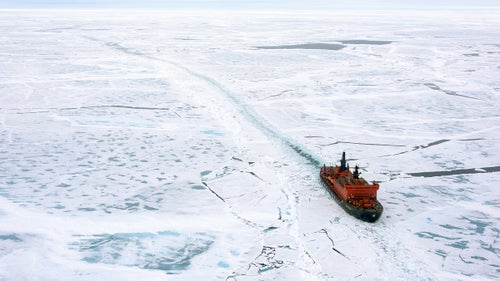
If you want to take a surface ship to the North Pole, you’ll need the biggest, baddest, most powerful Icebreaker in the world. Fortunately, the Russians have got you covered. This is 50 Let Pobedy (50 Years of Victory), one of six Arktika-Class nuclear-powered icebreakers operated by Rosatomflot (the Russian State Atomic Energy Corporation). The ship is the world’s most powerful Icebreaker. With two nuclear reactors, it generates 75,000 horsepower (that’s more than the power of 200 Chevy Suburbans) and is capable of breaking ice ridges almost 30 feet thick. During the summer, Rosatomflot partners with polar experts Quark Expeditions to bring a small number of tourists, explorers, and scientists to the Pole. The rest of the year, 50 Years of Victory clears ice in the increasingly accessible and valuable waters above the Arctic Circle.
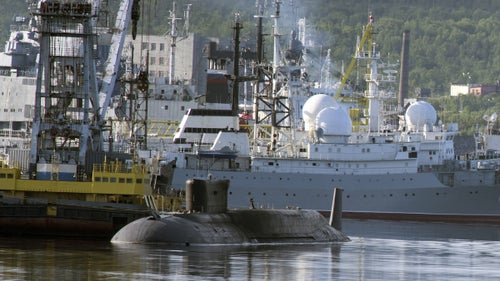
We sailed from a closed nuclear facility in Murmansk, through the Kola Bay, onto the Barents Sea. The Kola Peninsula is brimming with Russian warships of the Northern Fleet, shipwrecks, and curious communications facilities. As the Earth warms, Arctic ice is melting at an alarming rate—making the once inaccessible Arctic the next major battleground for natural resources and national security. Russia has recently with the United Nations claiming exclusive economic access to 463,000 square miles of Arctic territory, including the North Pole. Natural gas reserves in this newly claimed area have been valued in excess of $25 trillion.
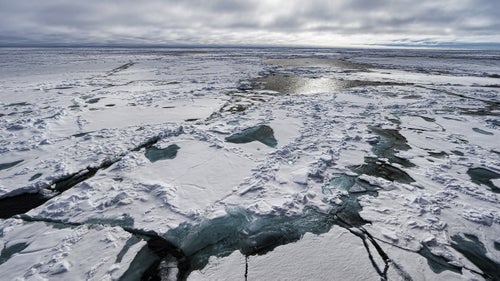
Two days out from Murmansk, we start to encounter sea-ice—a welcome juxtaposition from the cold-war era facilities of the Peninsula. Each degree of latitude brought more ice and more mystery. As the ice thickens, we enter the dominion the Polar Bear.
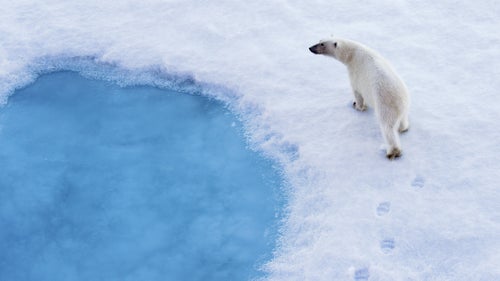
Polar bears may look sweet, but they are the apex predators of the Arctic. Humans are food, like every other living creature on the ice. Unfortunately, these magnificent, lone wanderers are suffering the effects of Arctic warming. As sea-ice disappears, it takes with it the bear’s staple diet in seals.
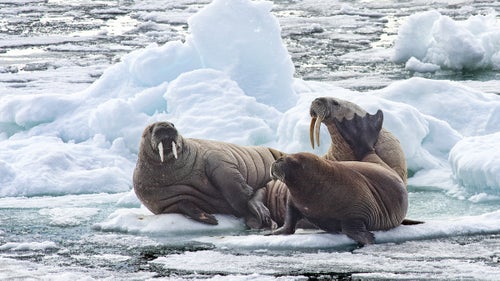
Along with the occasional seal and polar bear, small herds of walruses can be seen along the seemingly endless ice-floes. Tusks are used to help walruses climb out of the water onto the ice.
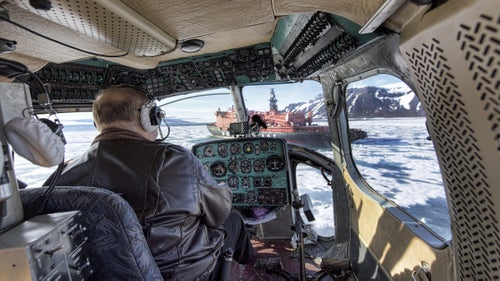
If you don’t have a drone to explore the islands, a 70’s era Russian MI-2 helicopter will do just fine. Stepping aboard this vintage helicopter requires the suspension of one’s normal life preservation instincts—pay no attention to the duct tape!
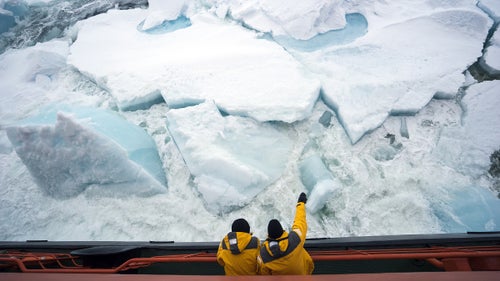
As we approach the pole, the ice thickens dramatically. Almost every other ship in the world would be stuck (or sink) in this kind of ice. 50 Years of Victory is so powerful, she barely shudders as she smashes through the floes and pressure ridges.
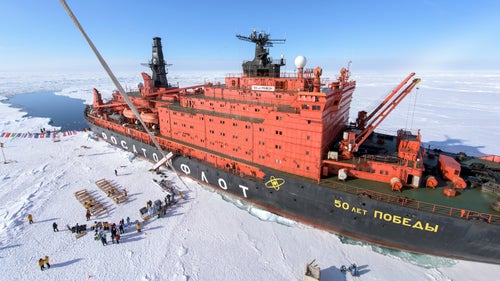
The North Pole! After five days at sea, 50 Years of Victory arrives at 90 degrees north on a crystal clear morning. There is no research base, historical marker, or any other indication that you’ve arrived anywhere special—other than your GPS. Once we found thick enough ice to disembark, the first order of business was to plant a big, red “North Pole” sign at the pole. Our outfitter Quark had brought along a hot-air balloon, allowing us to float above the pole. The tether can be seen just to the left in the photograph.
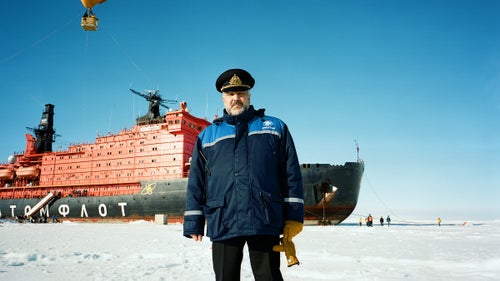
50 Years of Victory Captain Dmitry Lobusov is the unequivocal boss. Probably best not to wait for a smile to snap the picture.